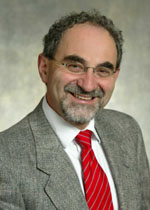
Abstract
The Shockley-Queisser (SQ) limit for a single junction solar cell is ~33.5 (under the standard AM1.5 flat-plate, solar spectrum). Indeed detailed calculations show that GaAs is capable of achieving this efficiency. Nonetheless, the record GaAs solar cell had achieved only 26.4% efficiency in 2010. Previously, the record had been stuck at 25.1% for almost two decades. Why then the 7% discrepancy between the theoretical limit 33.4% versus the achieved efficiency of 26.4%?
It is usual to blame material quality. But in the case of GaAs double heterostructures, the material is almost ideal with an internal fluorescence yield of >99%. This deepens the puzzle as to why the full theoretical SQ efficiency is not achieved?
As solar efficiency begins to approach the SQ limit, the internal physics of a solar cell changes. Shockley and Quiesser showed that high solar efficiency is accompanied by a high concentration of carriers, and by strong fluorescent emission of photons. In a good solar cell, the photons that are emitted internally have a possibility of being reabsorbed, leading to "photon re-cycling". The SQ limit assumes 100% external fluorescence yield. We find that the failure to optimize the extraction of recycled internal photons is largely responsible for the failure to achieve the SQ limit in the best solar cells. Achieving the SQ limit requires that light extraction physics be designed into solar cells. Now new efficiency records are being broken.
Biography
Eli Yablonovitch is the Director of the NSF Center for Energy Efficient Electronics Science (E3S), a multi-University Center based at Berkeley. He received his Ph.d. degree in Applied Physics from Harvard University in 1972. He worked for two years at Bell Telephone Laboratories, and then became a professor of Applied Physics at Harvard. In 1979 he joined Exxon to do research on photovoltaic solar energy. Then in 1984, he joined Bell Communications Research, where he was a Distinguished Member of Staff, and also Director of Solid-State Physics Research. In 1992 he joined the University of California, Los Angeles, where he was the Northrop-Grumman Chair Professor of Electrical Engineering. Then in 2007 he became Professor of Electrical Engineering and Computer Sciences at UC Berkeley, where he holds the James & Katherine Lau Chair in Engineering.
Prof. Yablonovitch is a Fellow of the IEEE, the Optical Society of America and the American Physical Society. He is a Life Member of Eta Kappa Nu, and a Member of the National Academy of Engineering and the National Academy of Sciences. He has been awarded the Adolf Lomb Medal, the W. Streifer Scientific Achievement Award, the R.W. Wood Prize, the Julius Springer Prize, and the Mountbatten Medal. He also has an honorary Ph.d. from the Royal Institute of Technology, Stockholm Sweden.
In his photovoltaic research, Yablonovitch introduced the 4n2 light-trapping factor that is used commercially in almost all high performance solar cells.
Yablonovitch introduced the idea that strained semiconductor lasers could have superior performance due to reduced valence band (hole) effective mass. Today, almost all semiconductor lasers use this concept, including telecommunications lasers, DVD players, and laser pointers.
Yablonovitch is regarded as one of the Fathers of the Photonic BandGap concept, and coined the term "Photonic Crystal".